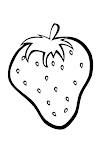Drawing an octopus can be a fascinating and creative experience. Octopuses have distinctive shapes and characteristics that make them interesting subjects for art. Here's a step-by-step guide to help you draw an octopus.

Materials required:
Drawing paper or sketchbook
Peneus (HB, 2B);
Eraser
Pen finishes or paste (discretionary, for highlights)
Shaded brushes or markers (discretionary, rather than paint)
Stage 1: Shape the first head
First, draw a somewhat smoothed oval on the highest point of the paper. This will be the top of the octopus. Ensure it is focused and not excessively large or little contrasted with the remainder of the body.
Stage 2: Arm Base
At the lower part of the lion's head is defined as a marginally bent boundary going to one side. This line will be the foundation of the octopus arms.
Stage 3: Appendage Suggestion
A few bent lines slide from the foundation of the limb. These lines will be the aides for the appendages. Octopuses normally have eight arms, with the goal that they define something like eight boundaries, fluctuating long and position.
Stage 4: Limb Shapes
Toward the finish of every ruler, attract a raised shape to address the foundation of every arm. Octopus plates are strong and have a thick base. Make these shapes different in size and direction.
Stage 5: Suckers
Draw around the plates under the arms. These cups can be unevenly separated and differ in size. Little octopuses are in many cases organized in lines, so focus on this as you draw.
Stage 6: Part Subtleties
Add huge, itemized eyes to the octopus' head. You can attract the eyes in the middle or on one side, what direction you believe that the octopus should look. Add students and reflections to rejuvenate the eyes.
Stage 7: Head Surface
To address the surface of the octopus' skin, draw serrated, wavy lines or little knocks on the head. This drawing will be more exact.
Stage 8: Appendage Subtleties
Add detail by adding a surface or shape to the appendages. Lines, spots, or examples can be attracted to the arms to make them seriously intriguing.
Stage 9: Maecenas of life (discretionary)
Consider adding a straightforward submerged foundation to your octopus plan. You can add ocean growth, shakes, or air pockets to make the scene invigorating. This step is discretionary and relies upon your making inclinations.
Stage 10: frame and complete (Discretionary)
On the off chance that you favor a spotless, characterized look, utilize fine pens or pencils to draw pencil lines. This step is discretionary and relies upon your favored style. If you favor a problematic, pencil-drove look, you can skirt this step.
Stage 11: Variety (Discretionary)
If you like to work with variety, you can utilize hued pencils or markers to add tone to the octopus. Consider reasonable tones or let your creative mind roam free with innovative varieties.
Stage 12: The Last little details
Audit your drawing and roll out any essential improvements. Certain extents are adjusted, each detail is obviously characterized and the general creation is outwardly engaging.
Fishing an octopus will permit you to investigate the entrancing shapes and elements of marine life. Whether you adopt a sensible strategy or add a dream, have some good times communicating your innovativeness by rejuvenating this animal plan on paper.






0 Comments